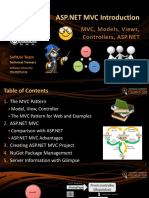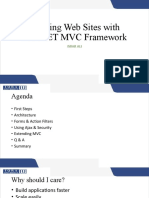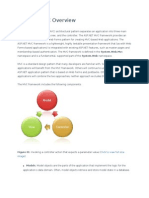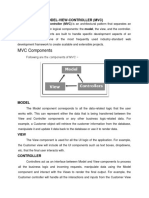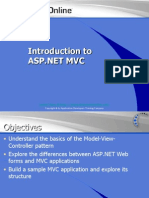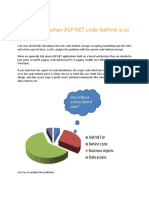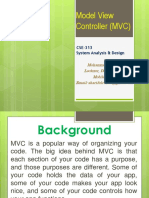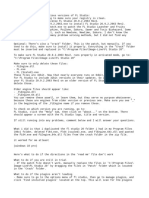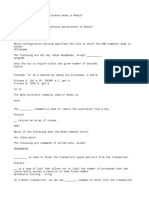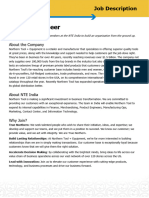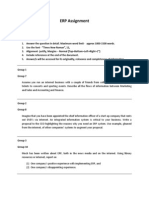100% found this document useful (1 vote)
75 views66 pagesPresentation+ASPNET+MVC+Core+ +Part+I
The document provides an overview of ASP.NET MVC Core 2, including its history, architecture, and key components like models, views, and controllers. It emphasizes the benefits of using ASP.NET Core, such as improved separation of concerns, extensibility, control over HTML, testability, and a powerful routing system. Additionally, it includes recommendations for further reading and resources for learning ASP.NET Core development.
Uploaded by
Kushner SergeCopyright
© © All Rights Reserved
We take content rights seriously. If you suspect this is your content, claim it here.
Available Formats
Download as PPTX, PDF, TXT or read online on Scribd
100% found this document useful (1 vote)
75 views66 pagesPresentation+ASPNET+MVC+Core+ +Part+I
The document provides an overview of ASP.NET MVC Core 2, including its history, architecture, and key components like models, views, and controllers. It emphasizes the benefits of using ASP.NET Core, such as improved separation of concerns, extensibility, control over HTML, testability, and a powerful routing system. Additionally, it includes recommendations for further reading and resources for learning ASP.NET Core development.
Uploaded by
Kushner SergeCopyright
© © All Rights Reserved
We take content rights seriously. If you suspect this is your content, claim it here.
Available Formats
Download as PPTX, PDF, TXT or read online on Scribd
/ 66









